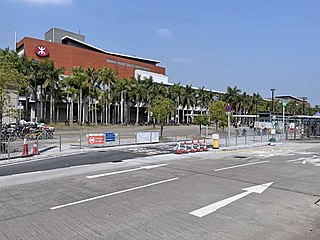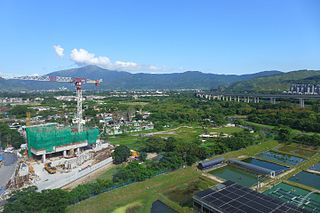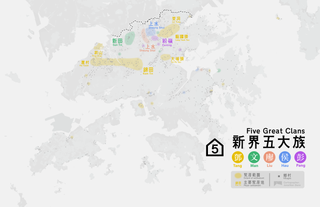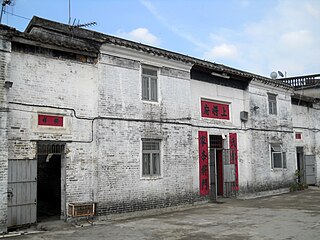Shek Kong 石崗 | |
|---|---|
 Shek Kong Airfield in May 2011 | |
 |
| Shek Kong | |||||||||||||
|---|---|---|---|---|---|---|---|---|---|---|---|---|---|
| Traditional Chinese | 石崗 | ||||||||||||
| Simplified Chinese | 石岗 | ||||||||||||
| |||||||||||||

Shek Kong is an area north of Tai Mo Shan,located near Kam Tin and Pat Heung,in Yuen Long District,New Territories,Hong Kong,hosting Shek Kong San Tsuen,Shek Kong Barracks and Shek Kong Airfield.
Contents
The area named after an old walled village of Shek Kong on the south side of north tributary of Kam Tin River,predating New Territories of 1898. The village was demolished in late-1940s for the setup of Shek Kong Camp,south of Kam Tin Road. Shek Kong is Cantonese phonetic transcription of native writing 石崗that means a rocky mount. Its history was much longer as pots from Tang dynasty and Song dynasty were unearthed in Shek Kong.
The barracks and airfield occupied the largest area of Shek Kong,flattening the landscape and re-channelling of south tributary of Kam Tin River. The runway serves both military for helicopters and civilian to fly aeroplane for leisure.
There are military quarters Shek Kong Village,built in 1957,not in Shek Kong but far on the slope of and original village of Lui Kung Tin along Route Twisk. The village was originally for the married members of Shek Kong Camp/Barracks. The naming causes confusion afterwards to the location of Shek Kong and gives an illusion that Shek Kong has a vast portion of Pat Heung,including Lin Fa Tei and Sheung Tsuen,between Shek Kong Barracks/Airfield and Shek Kong Village. Some even tried to identify the rocky mount as Kwun Yam Shan which far from Shek Kong. [1]
A sizable Nepal Gurkha population is present in the area and adjacent area of Kam Tin and Pat Heung even after the withdrawal of British military and many of them are moved to various area in Yuen Long District such as Yuen Long,and even more to Kwun Chung in Kowloon. [2] [3]












